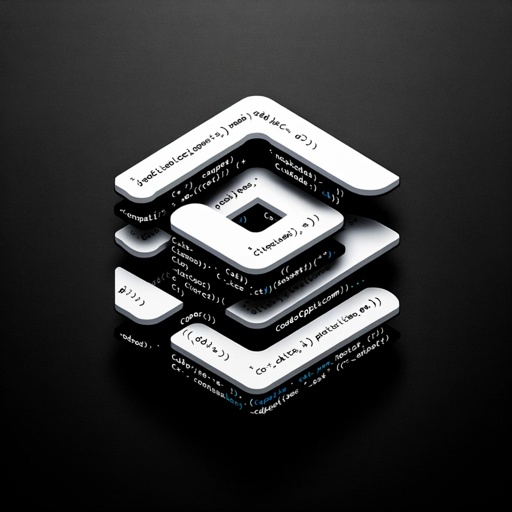Malware Analysis | Reverse Engineering-malware analysis tool
AI-powered malware analysis and reverse engineering.
Can you analyse this executable?
Tell me how I can inspect network traffic.
How do I recognize malicious program?
Provide me the latest infosec updates.
Related Tools
Load More
Malware Analyst
Disassembler and debugger with CyberChef-like capabilities.

Cyber Threat Hunting and Detection Engineering
Expert in detection engineering, threat hunting, Sigma and Yara rules creation.

Ghidra
This plugin assists reverse-engineering binary programs, including decompiling.

Malware Rule Master
Expert in malware analysis and Yara rules, using web sources for specifics.

Avalanche - Reverse Engineering & CTF Assistant
Assisting with reverse engineering and CTF using write ups and instructions for solving challenges

Red Cell
Expert hacker and social engineer to assist cyber security professionals.
20.0 / 5 (200 votes)
Introduction to Malware Analysis | Reverse Engineering
Malware Analysis and Reverse Engineering involve the dissection and examination of malicious software to understand its behavior, functionality, and origin. This practice is crucial in cybersecurity, as it helps in developing effective defenses against malware attacks, identifying vulnerabilities, and understanding the techniques used by cybercriminals. The primary functions include static and dynamic analysis, which involve examining the code without executing it and observing its behavior during execution, respectively. For instance, static analysis might involve decompiling an executable to understand its structure, while dynamic analysis could include running the malware in a sandbox environment to monitor its activities.

Main Functions of Malware Analysis | Reverse Engineering
Static Analysis
Example
Analyzing the code structure, imports, and strings of a binary executable without executing it.
Scenario
An analyst receives a suspicious executable file and uses static analysis tools like IDA Pro or Ghidra to decompile the binary. They examine the code for known malicious patterns, hardcoded IP addresses, or suspicious strings. This process helps in identifying the potential threat level and functionality of the malware.
Dynamic Analysis
Example
Executing the malware in a controlled environment to observe its behavior.
Scenario
A security team sets up a sandbox environment to run a malware sample. During execution, they monitor network traffic, file system changes, and process activity. This helps in understanding how the malware operates, including any attempts to connect to command-and-control servers or modify system files.
Behavioral Analysis
Example
Observing the impact of malware on a system over time.
Scenario
An analyst deploys malware on a virtual machine and monitors the system's state over an extended period. They track changes in system performance, new file creations, registry modifications, and other indicators of persistent threats. This helps in understanding long-term impacts and persistence mechanisms of the malware.
Ideal Users of Malware Analysis | Reverse Engineering Services
Cybersecurity Professionals
These individuals work in defending organizations against cyber threats. They benefit from malware analysis to understand new threats, develop defenses, and respond to incidents. Their work involves using analysis results to update security policies, create signatures for detection systems, and educate other stakeholders on emerging threats.
Threat Intelligence Analysts
These experts focus on gathering and analyzing information about current and potential cyber threats. They use malware analysis to gain insights into threat actor tactics, techniques, and procedures (TTPs). This information is crucial for predicting future attacks and informing strategic decisions in cybersecurity.

How to Use Malware Analysis | Reverse Engineering
Step 1
Visit aichatonline.org for a free trial without login, also no need for ChatGPT Plus.
Step 2
Upload the file you want to analyze. Make sure the file is ready for analysis and is in a supported format.
Step 3
Wait for the tool to process and analyze the file. This includes hashing, metadata extraction, and static analysis for executables.
Step 4
Review the comprehensive analysis report provided, which includes detailed information about the file's content and potential risks.
Step 5
Utilize the findings to make informed decisions about handling the file, such as implementing security measures or further investigative steps.
Try other advanced and practical GPTs
Econ GPT
AI-Powered Macroeconomic Analysis

Real Estate Attorney
AI-Powered Legal Guidance for Real Estate

Astro GPT
AI-powered astrology for personalized insights

Prompt Engineer (Build Prompts)
Enhance AI interactions with precise prompts

EdTech Buddy
AI-powered tool for smarter education

Econometric Analyst
AI-powered econometric analysis made simple.

Zusammenfassung Plus: URL PDF Chat Docs Artikel
AI-powered document summarization made easy.

GPT for Modelling System Dynamics
AI-Powered System Dynamics Modeling

Excel Financial Model Prof / Review
AI-Powered Financial Model Review Tool

Ansys Engineering Simulation
AI-Enhanced Engineering Solutions

CodeOptima
AI-powered programming assistant.

Friday
Intelligent AI, personalized for every task.

- Reverse Engineering
- Security Research
- File Analysis
- Malware Detection
- Threat Investigation
Five Detailed Q&A about Malware Analysis | Reverse Engineering
What types of files can be analyzed?
The tool can analyze a variety of file types including executables, documents, scripts, and compressed files. It performs hashing, metadata extraction, and static analysis for executable files.
How does the tool ensure the accuracy of its analysis?
The tool uses advanced algorithms and extensive databases to cross-reference file signatures, behaviors, and other indicators. This ensures a high degree of accuracy in identifying potential malware and other security threats.
Can this tool be used for real-time malware detection?
No, the tool is designed for static analysis and does not perform real-time detection. It is best used for post-event analysis or for scanning files before they are introduced into a secure environment.
What kind of output can I expect from the analysis?
The output includes detailed information on file hashes, metadata, embedded resources, potential vulnerabilities, and suspicious behaviors. It provides a comprehensive report that can be used for further investigation or mitigation.
Is any special software required to use the tool?
No special software is required. The tool is accessible through a web browser and does not need any additional installations or plugins.